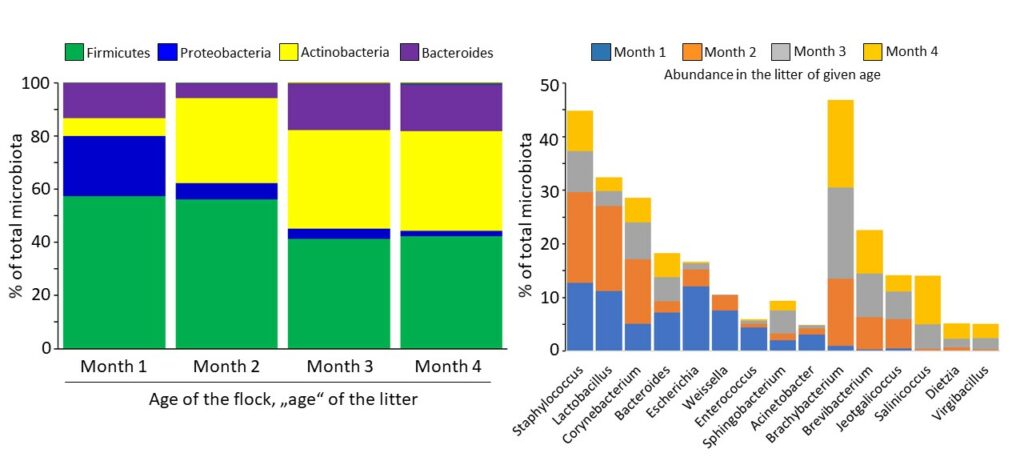Litter microbiota is of specific composition which develops in time. During the first month after chicken placement at farm, Gram positive Firmicutes and Gram negative Proteobacteria dominate in litter microbiota. From month 2, Proteobacteria are replaced by Actinobacteria. Family Staphylococcaceae (Staphylococcus, Jeotgallicoccus, Salinicoccus) is the most common out of Firmicutes while Brevibacterium, Brachybacterium, Corynebacterium or Dietzia represent the most frequent genera in the litter microbiota belonging to Actinobacteria. Bacterial species which are recorded also in the eggshell waste in hatcheries, e.g. Escherichia, Acinetobacter or Enterococcus, can be found in the litter microbiota during the first month of production. This means that these bacteria persist in the litter throughout the whole broiler production, but otherwise they are not long-term adapted to this environment since their representation gradually decreases and are replaced by other bacterial species. From month 3, bacterial species which require increased osmotic pressure for their growth, e.g. Salinicoccus, Dietzia or Virgibacillus, appear in the litter microbiota. Different Lactobacillus species are common to litter microbiota of chickens in production what little bit argues against the use of lactobacilli-based probiotics – unlike unusual cases, there is enough of lactobacilli in living environment of chickens in commercial production. Although not shown in the figures below, gut microbiota of chickens form around 15 % of total litter microbiota.
